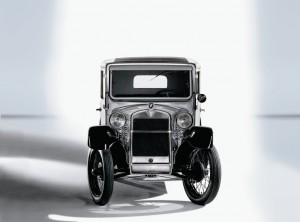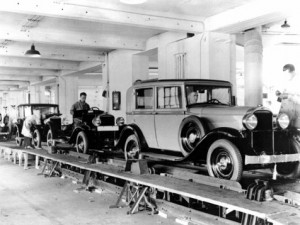Newspaper advertisements appeared eighty years ago today in Berlin. They invited people to view a new small car designated as the 3/15PS DA2. The DA meant “Deutsche Ausführung” or German Version of what became known as the first car from an already well established airplane engine and motorcycle maker — BMW.
BMW had taken over production of the so-called Dixi small car, the earliest version of which first appeared in 1904 in Germany.
The original Dixi came about after previous licensed cars built in Eisenach since 1896 from French designs had failed to attract many customers.
The BMW Dixi came off a production line at the end of March 1929 in BMW’s plant near the former Berlin-Johannisthal Airport –the birthplace of German aviation where, among other significant events, a Dutchman by the name of Anthony Fokker made a tri-plane that was used by the Red Baron during WW1.
BMW’s 1929 Dixi was basically the continuation of the Dixie DA1 3/15 that first appeared in 1927, and was assembled largely from existing parts. DA1 was licensed from the Austin Motor Company of Birmingham, England. But Gothaer Waggonfabrik AG, assembler of the DA1, failed during the hyperinflation and collapsing economy of 1928. That November BMW took over the plant.
Even give its mixed parentage, BMW claims the 1929 DA2 it as its first production model.
Apart from its reliability, BMW historians claim, the Dixi also appealed to a growing number of customers through its all-round economy and relatively low price. Dixi was said to be more economical in use than purchasing railroad tickets, the predominate form of mechanized transportation at the time.
Better still, the customer had the option to pay the purchase price of 2,200 Reichmarks for the “base” version in installments.
This made the BMW cheaper than a comparable Hanomag model of the time from Hannoversche Maschinenbau AG, with the DA2 selling at about the same price as the best seller back then, the Opel Laubfrosch.



